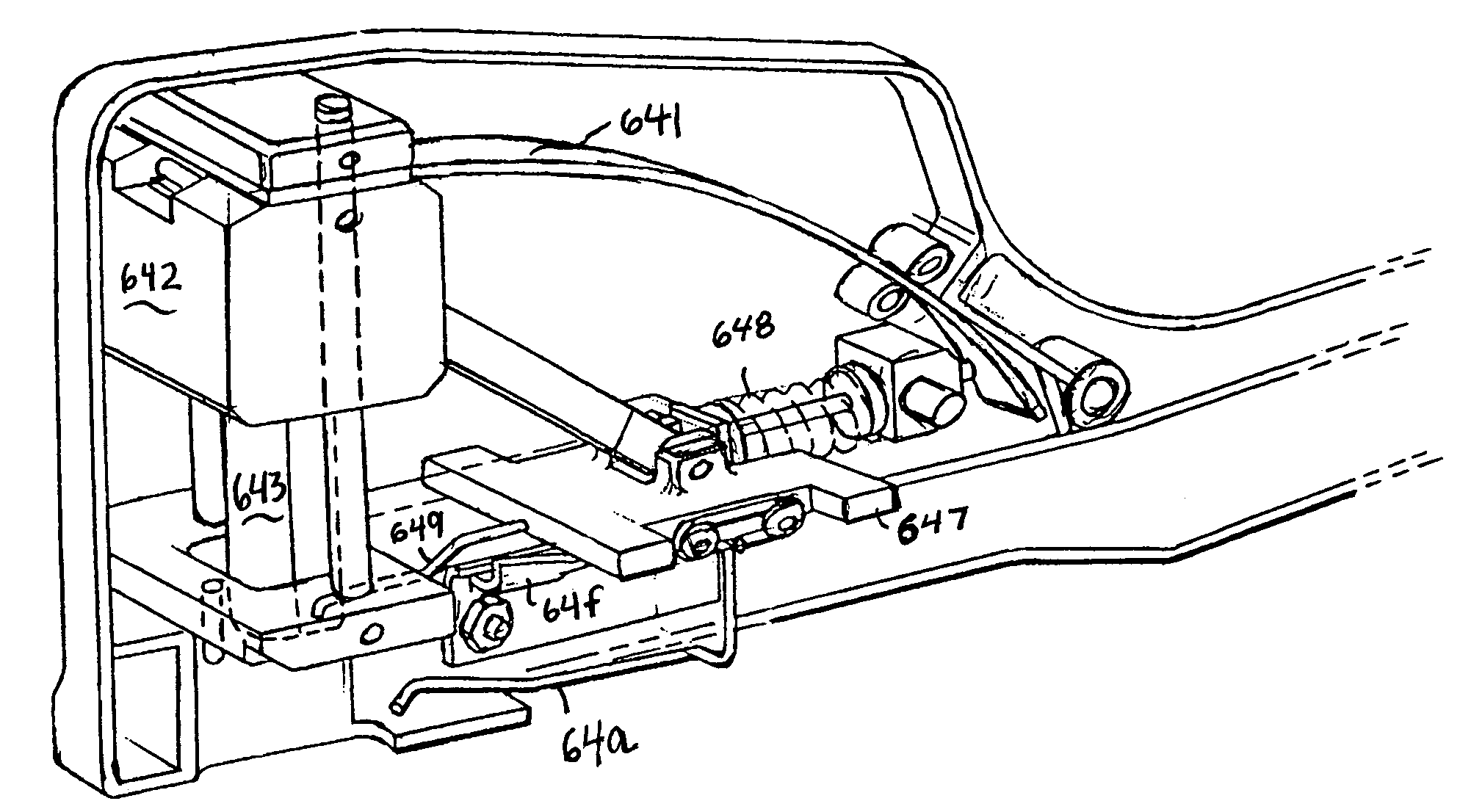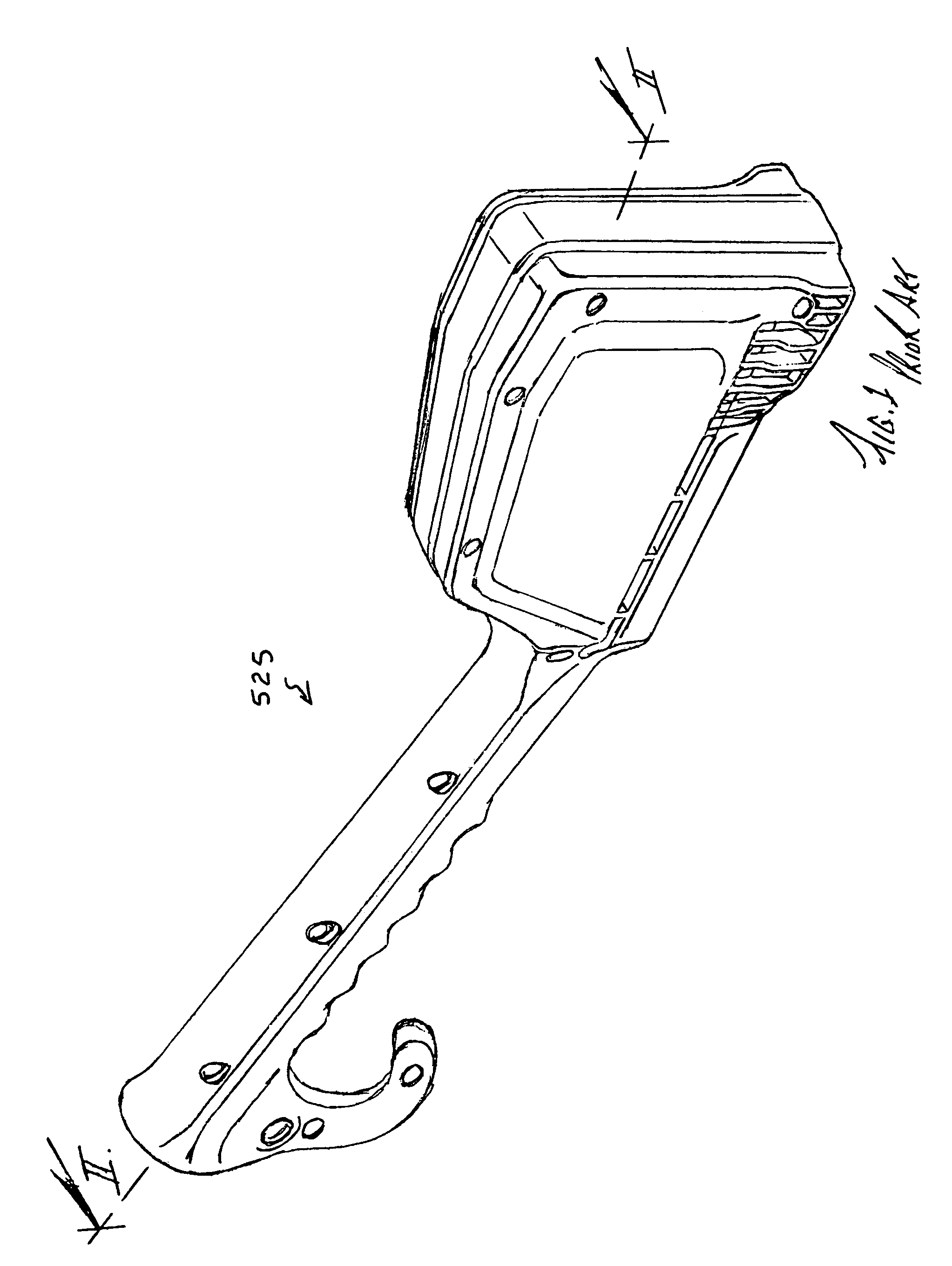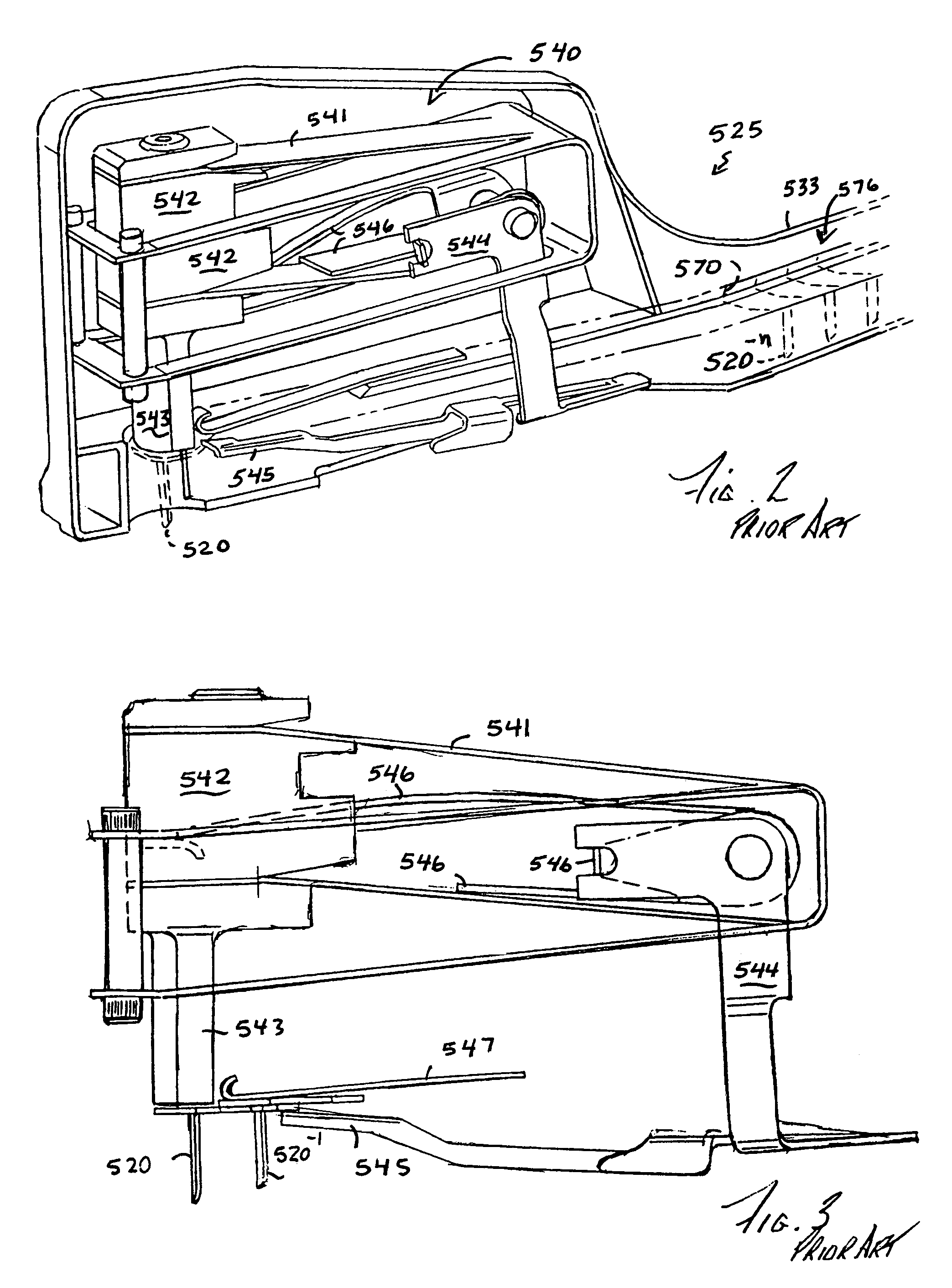Hammer tacker, and tack therefor
a hammer tack and hammer technology, applied in the direction of nails, nailing tools, fastening means, etc., can solve the problems of difficult to achieve uniformity between one copy and another, difficult to keep within even a loose dimensional tolerance, and difficult to fabricate individual custom spring designs. , to achieve the effect of high efficiency, reliable and reliable operability
- Summary
- Abstract
- Description
- Claims
- Application Information
AI Technical Summary
Benefits of technology
Problems solved by technology
Method used
Image
Examples
Embodiment Construction
[0035]FIG. 7 shows a hammer tacker 625 in accordance with the invention.
[0036]FIG. 8 is an enlarged scale perspective view taken in the direction of arrows VIII-VIII in FIG. 7, and has the near-side half of the split housing removed to better reveal the tack driving-and-feed mechanism(s). Aspects of this include the piston-and-ram unit 642 / 643, its leaf spring 641, the tack-feeding slide 647, its compression spring 648, its tack driver 649, its stabilizer 64a for the last-tack of all when proceeded to the lead position (eg., the position where the piston-and-ram unit 642 / 643 strikes it into the target).
[0037]FIG. 9 is a side elevational view of FIG. 8. The leaf spring 641 is produced from readily available off-the-shelf flat band spring steel stock. It is simply cut to length. As FIG. 9, shows, this leaf spring is simply constrained as shown without fixture to either of its ends. That is, one or both of its ends are free to slide in their constraints.
[0038]The compression spring 648...
PUM
 Login to View More
Login to View More Abstract
Description
Claims
Application Information
 Login to View More
Login to View More - R&D
- Intellectual Property
- Life Sciences
- Materials
- Tech Scout
- Unparalleled Data Quality
- Higher Quality Content
- 60% Fewer Hallucinations
Browse by: Latest US Patents, China's latest patents, Technical Efficacy Thesaurus, Application Domain, Technology Topic, Popular Technical Reports.
© 2025 PatSnap. All rights reserved.Legal|Privacy policy|Modern Slavery Act Transparency Statement|Sitemap|About US| Contact US: help@patsnap.com



